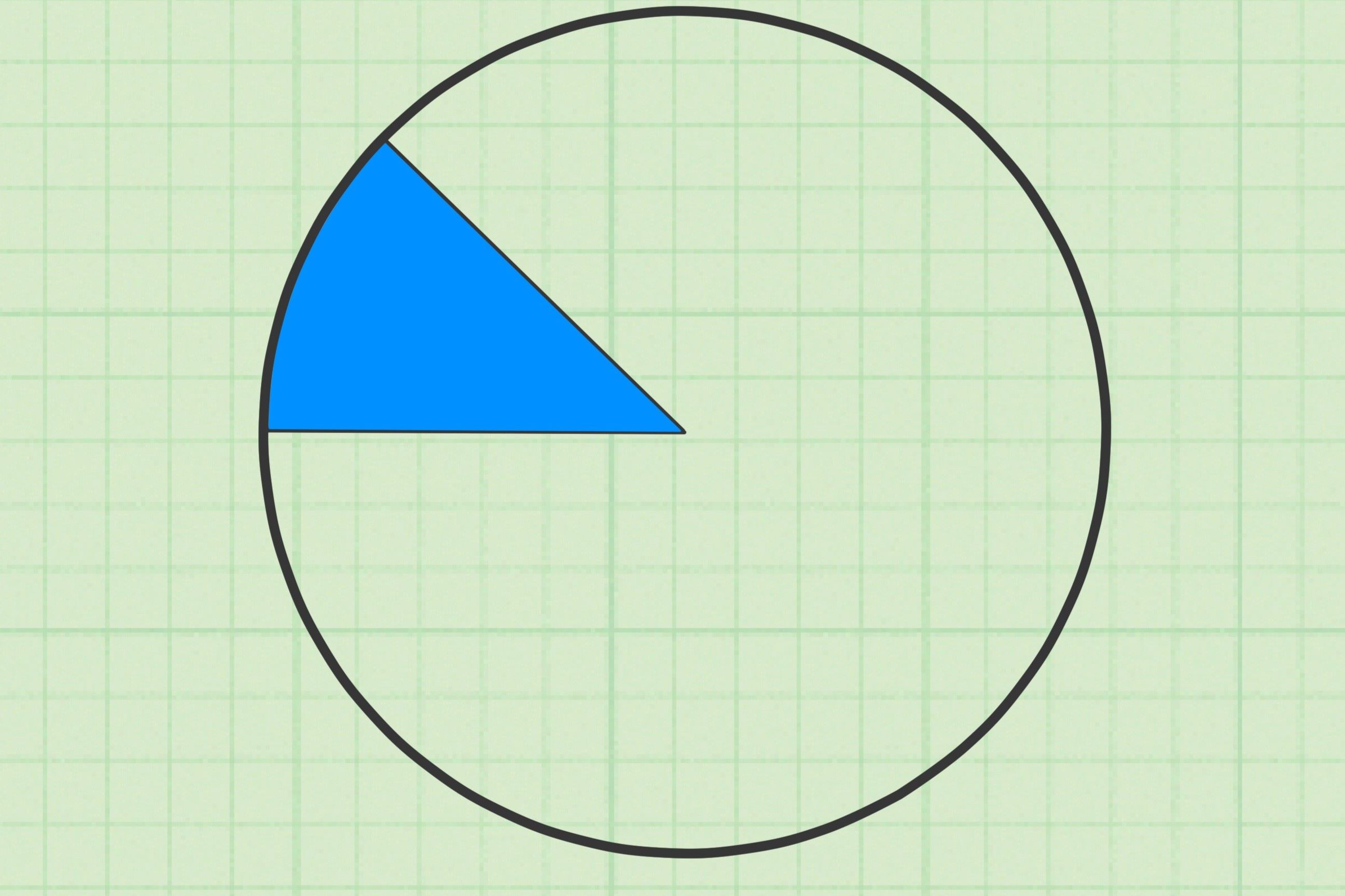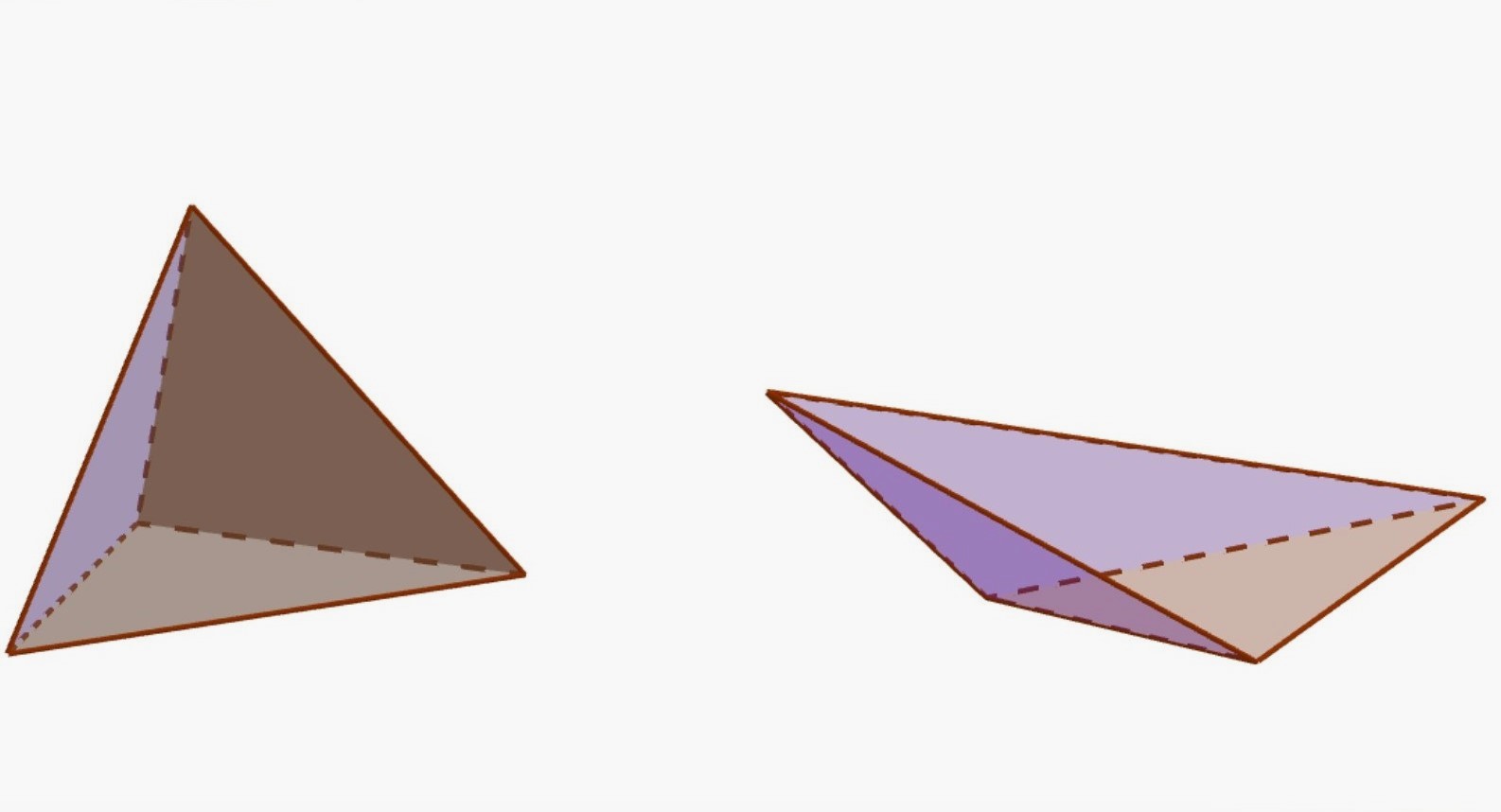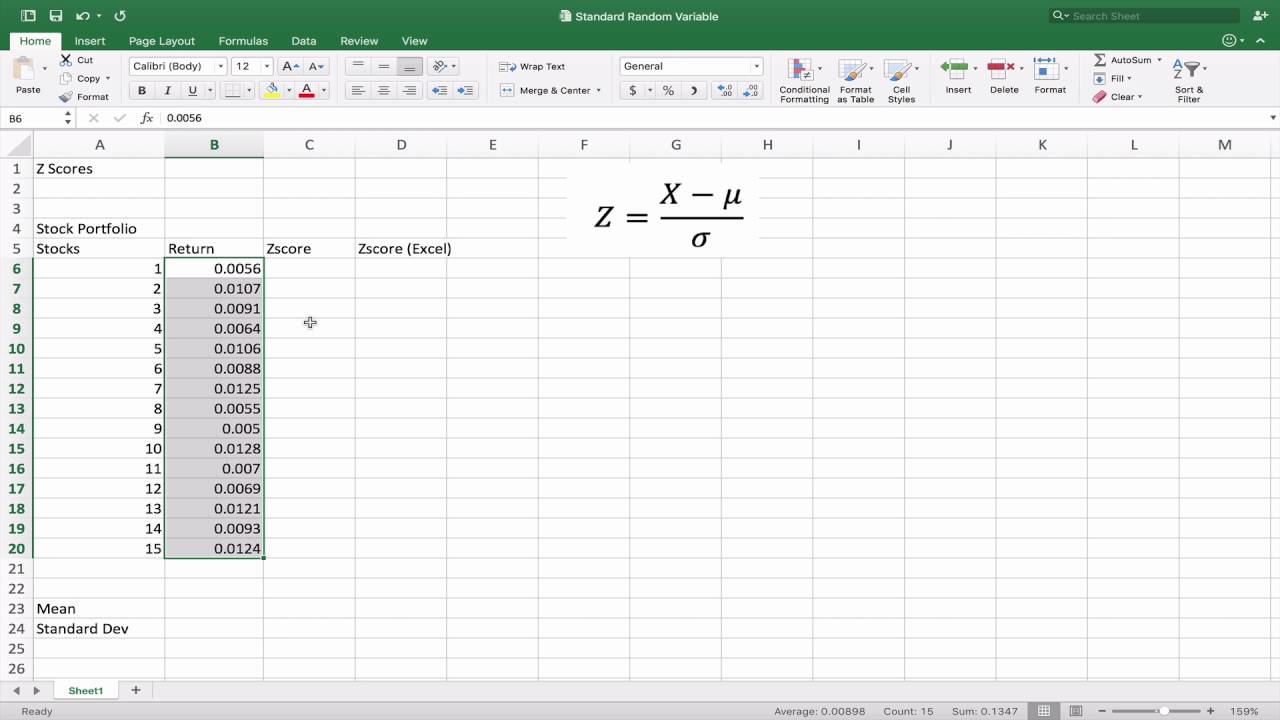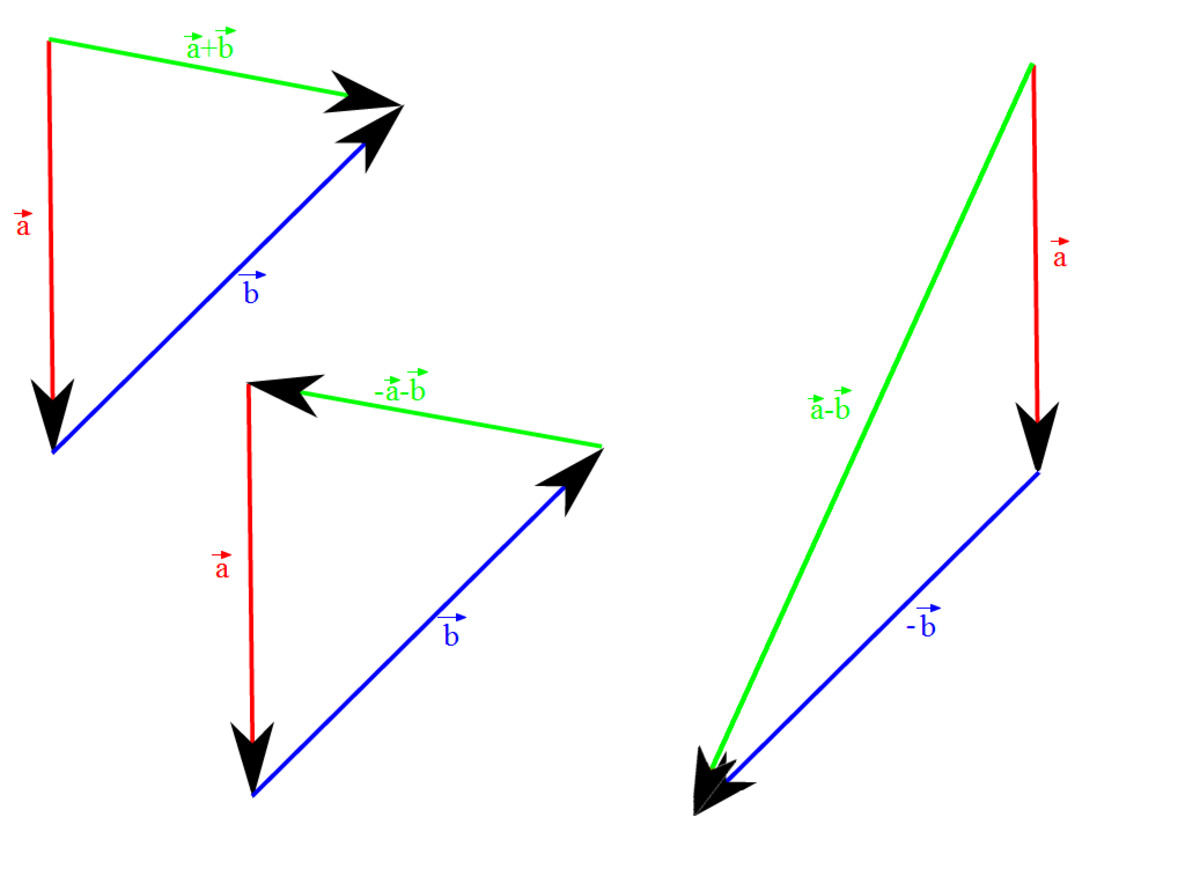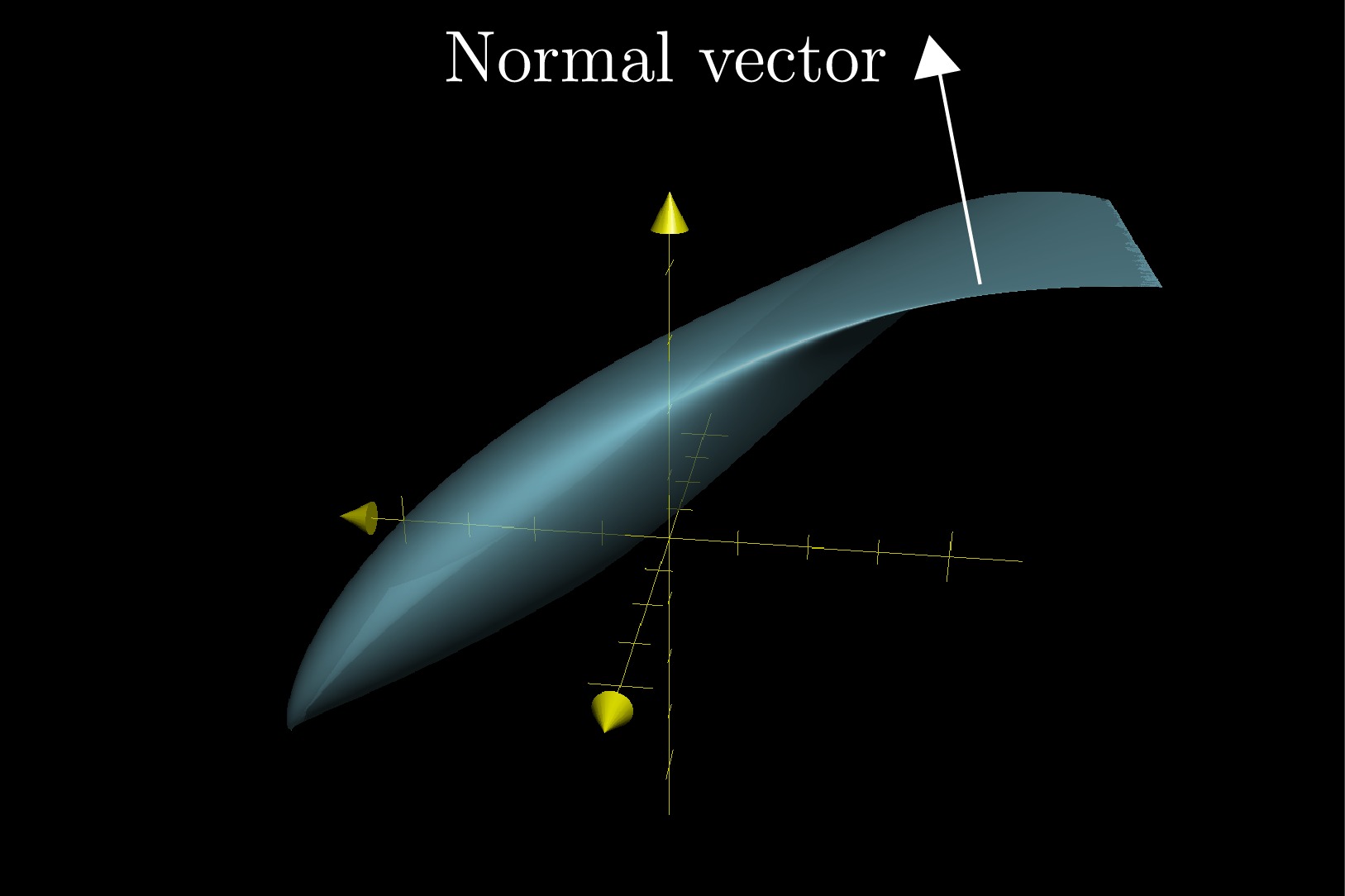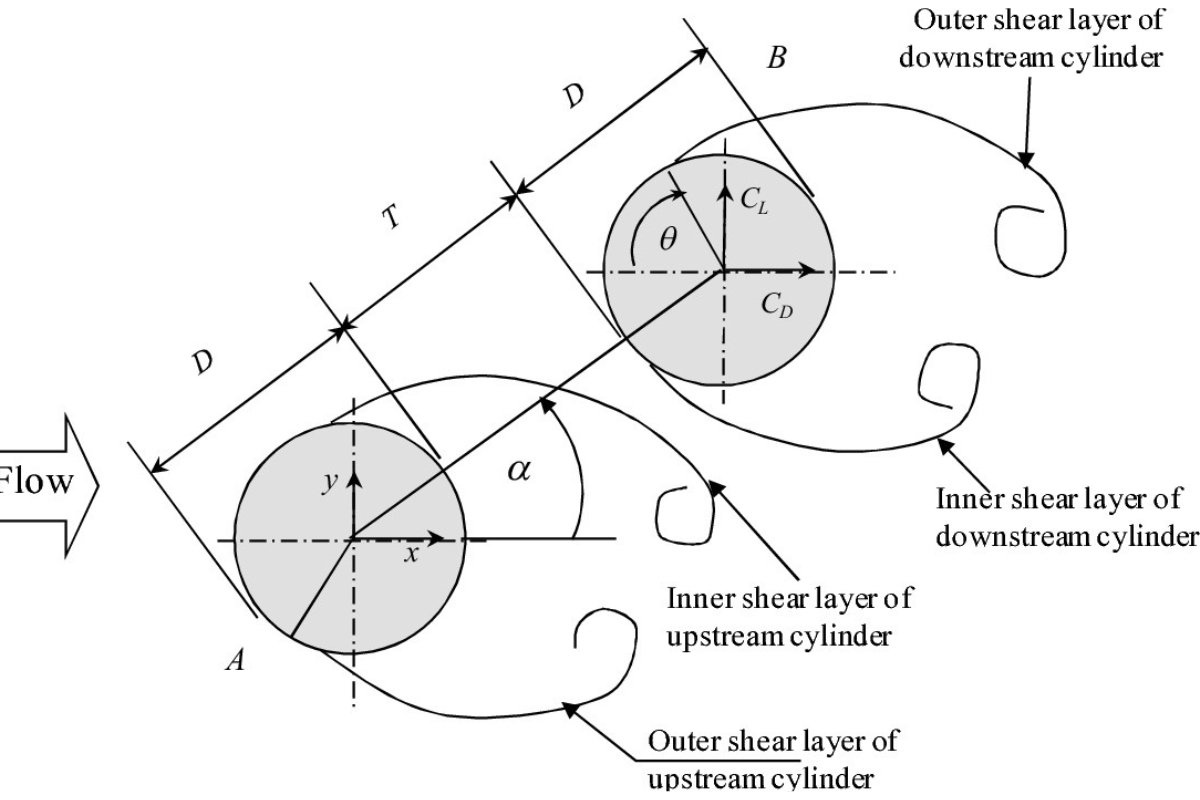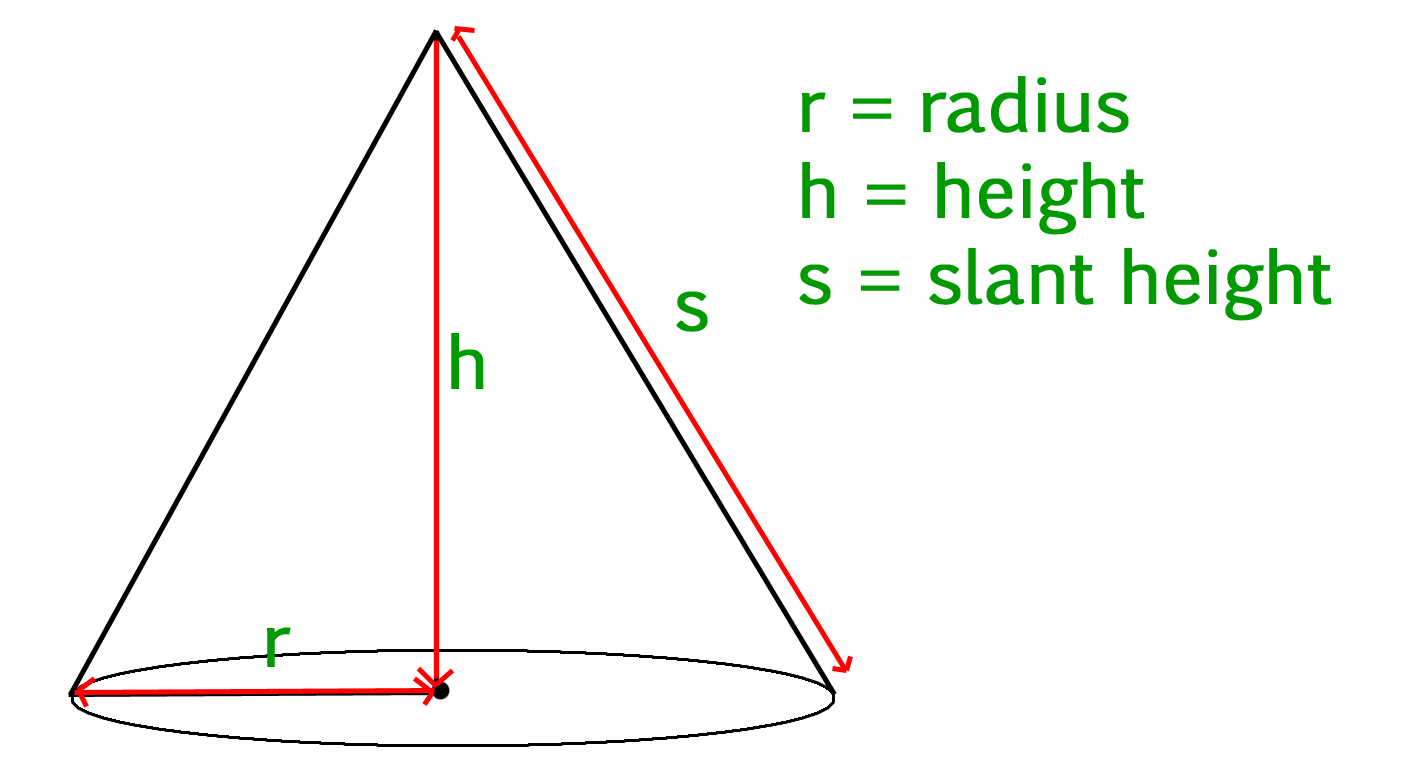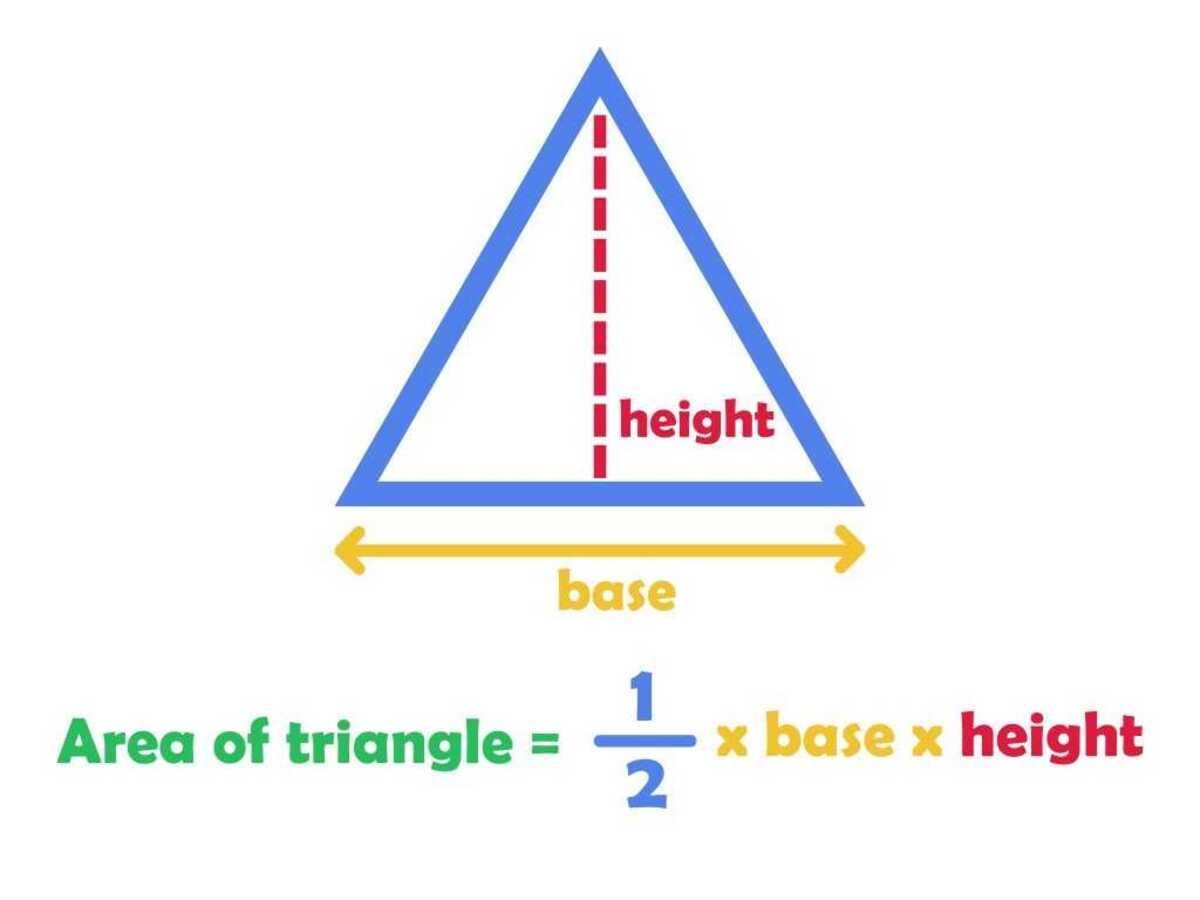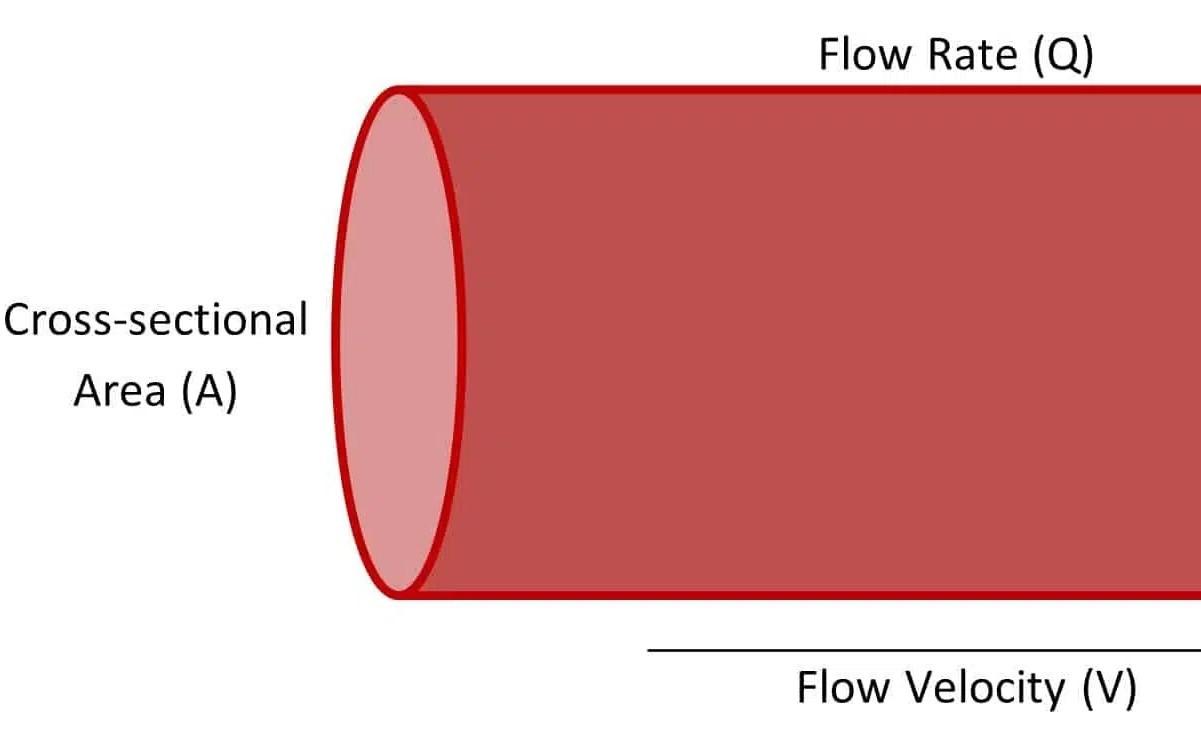Home>Mathematics>How To Calculate A Unit Vector
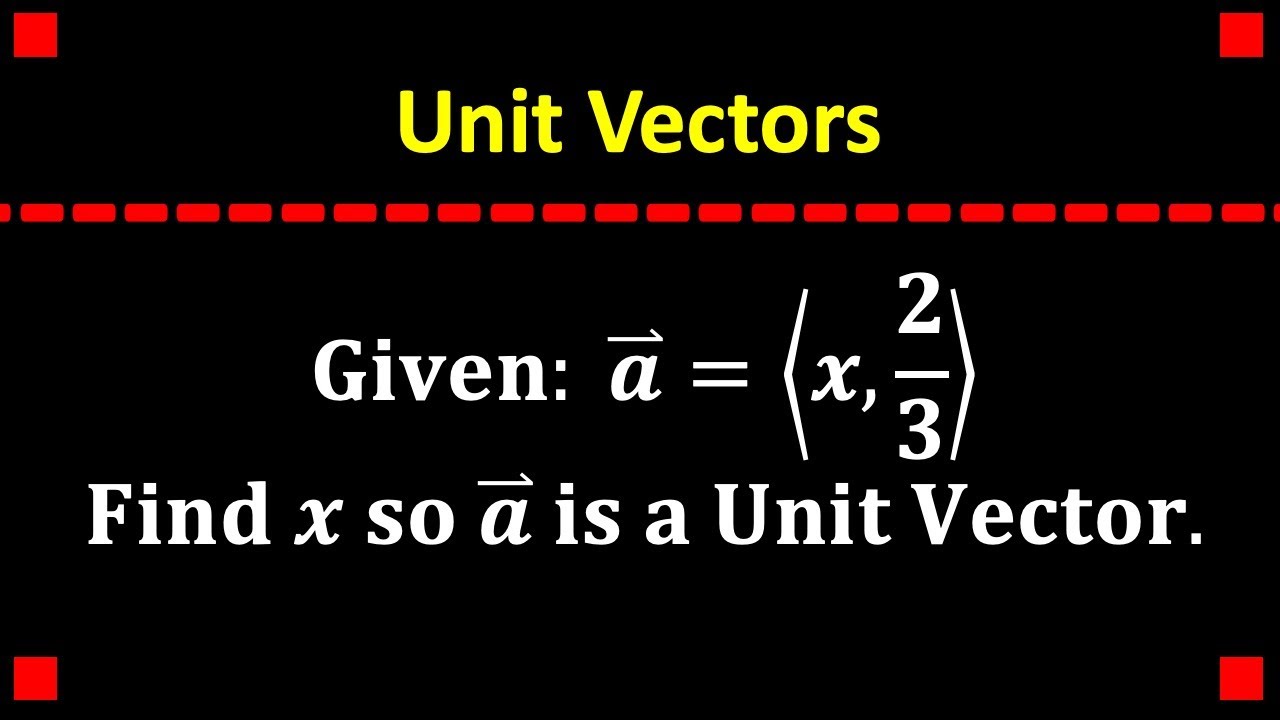

Mathematics
How To Calculate A Unit Vector
Published: February 26, 2024
Learn how to calculate a unit vector in mathematics with step-by-step instructions and examples. Understand the concept and application of unit vectors.
(Many of the links in this article redirect to a specific reviewed product. Your purchase of these products through affiliate links helps to generate commission for Noodls.com, at no extra cost. Learn more)
Table of Contents
Introduction
Understanding the concept of unit vectors is fundamental in various fields, including mathematics, physics, and engineering. A unit vector is a vector with a magnitude of 1 and is often used to indicate direction. When working with vectors, it's essential to be able to calculate unit vectors accurately. This article will explore the definition of a unit vector and provide two methods for calculating it. Additionally, we will delve into example problems to illustrate the application of these methods in real-world scenarios.
The ability to calculate unit vectors is crucial in numerous practical applications. In physics, unit vectors are utilized to represent forces, velocities, and accelerations, enabling scientists and engineers to analyze and predict the behavior of physical systems. In mathematics, unit vectors play a pivotal role in vector operations, such as dot products and cross products, contributing to the understanding of spatial relationships and geometric concepts.
By mastering the calculation of unit vectors, individuals can gain a deeper comprehension of vector quantities and their significance in diverse contexts. Whether it's navigating the forces acting on a structure, determining the direction of a moving object, or solving complex mathematical problems, the knowledge of unit vectors empowers individuals to make informed decisions and solve real-world challenges.
In the subsequent sections, we will explore the definition of a unit vector and present two distinct methods for calculating it. Through clear explanations and illustrative examples, readers will gain a solid grasp of the principles behind unit vectors and the practical techniques for determining them. Let's embark on this journey to unravel the intricacies of unit vectors and equip ourselves with valuable problem-solving skills.
Definition of a Unit Vector
A unit vector is a vector with a magnitude of 1. In other words, it is a vector that has been normalized to have a length of 1 unit. This normalization process involves dividing each component of the vector by its magnitude, resulting in a vector that points in the same direction but has a length of 1.
Unit vectors are denoted by placing a hat symbol (^) above the variable representing the vector, such as ( hat{v} ). This notation signifies that the vector is a unit vector. The unit vector in the same direction as a given vector ( vec{v} ) can be obtained by dividing ( vec{v} ) by its magnitude:
[ hat{v} = frac{vec{v}}{|vec{v}|} ]
Unit vectors are particularly useful for indicating direction. When a vector represents a physical quantity such as force or velocity, its corresponding unit vector provides the direction in which the quantity is acting. This makes unit vectors essential in various scientific and engineering applications, where understanding and manipulating directional information is crucial.
In addition to their significance in indicating direction, unit vectors play a key role in simplifying vector operations. When performing calculations involving vectors, using unit vectors can streamline the process and make the results more intuitive. For instance, expressing a vector in terms of its unit vector components can facilitate computations involving dot products, cross products, and projections.
Understanding the concept of unit vectors and their role in representing direction and simplifying vector operations is foundational in many fields, including physics, engineering, and mathematics. By grasping the definition and properties of unit vectors, individuals can enhance their problem-solving abilities and gain a deeper insight into the behavior of vector quantities in diverse contexts.
Method 1: Using the Magnitude of the Vector
One of the fundamental methods for calculating a unit vector involves utilizing the magnitude of the given vector. The magnitude of a vector, denoted as |𝑣|, represents its length or size in a specific direction. To obtain the unit vector in the same direction as the given vector 𝑣, we can divide the vector by its magnitude.
The process of using the magnitude to calculate a unit vector can be broken down into simple steps. Let's consider a vector 𝑣 = (𝑎, 𝑏, 𝑐) in three-dimensional space. The magnitude of 𝑣, denoted as |𝑣|, can be computed using the formula:
[ |𝑣| = sqrt{𝑎^2 + 𝑏^2 + 𝑐^2} ]
Once the magnitude |𝑣| is determined, the unit vector in the same direction as 𝑣, denoted as (hat{𝑣}), can be obtained by dividing the vector 𝑣 by its magnitude:
[ hat{𝑣} = frac{𝑣}{|𝑣|} = left( frac{𝑎}{|𝑣|}, frac{𝑏}{|𝑣|}, frac{𝑐}{|𝑣|} right) ]
This process normalizes the vector 𝑣 to have a magnitude of 1, resulting in the unit vector (hat{𝑣}) that points in the same direction as 𝑣. The components of the unit vector (hat{𝑣}) are obtained by dividing the corresponding components of 𝑣 by the magnitude |𝑣|.
Using the magnitude of the vector to calculate the unit vector provides a straightforward and intuitive approach. It allows us to transform any non-zero vector into a unit vector without altering its direction. This method is particularly useful in scenarios where the direction of a vector is known, and there is a need to normalize it to a unit length for further calculations or analysis.
By employing this method, individuals can effectively determine the unit vector corresponding to a given vector, enabling them to express directional information in a concise and standardized form. This approach forms the foundation for understanding the concept of unit vectors and their practical applications in various scientific and mathematical contexts.
Method 2: Using the Components of the Vector
Another method for calculating a unit vector involves utilizing the components of the given vector. This approach provides an alternative way to determine the unit vector without explicitly computing the magnitude of the vector. By directly working with the components of the vector, we can normalize it to obtain the unit vector in the same direction.
Let's consider a vector 𝑣 = (𝑎, 𝑏, 𝑐) in three-dimensional space. To calculate the unit vector (hat{𝑣}) using this method, we can follow a systematic process. The components of the unit vector (hat{𝑣}) can be obtained by dividing each component of the vector 𝑣 by the vector's overall magnitude, |𝑣|:
[ hat{𝑣} = left( frac{𝑎}{sqrt{𝑎^2 + 𝑏^2 + 𝑐^2}}, frac{𝑏}{sqrt{𝑎^2 + 𝑏^2 + 𝑐^2}}, frac{𝑐}{sqrt{𝑎^2 + 𝑏^2 + 𝑐^2}} right) ]
This process normalizes the vector 𝑣 to have a magnitude of 1, resulting in the unit vector (hat{𝑣}) that points in the same direction as 𝑣. By dividing each component of the vector by the magnitude |𝑣|, we ensure that the resulting unit vector maintains the original direction of the vector 𝑣 while having a magnitude of 1.
Using the components of the vector to calculate the unit vector offers a direct and component-wise approach. It allows us to normalize the vector without explicitly computing the magnitude, making it particularly useful in situations where the explicit magnitude calculation may be cumbersome or unnecessary.
This method provides a valuable alternative for determining the unit vector, showcasing the flexibility and adaptability in approaching vector calculations. By understanding and applying this method, individuals can efficiently obtain the unit vector corresponding to a given vector, facilitating the representation of directional information in a concise and standardized form.
By employing this method, individuals can effectively determine the unit vector corresponding to a given vector, enabling them to express directional information in a concise and standardized form. This approach forms the foundation for understanding the concept of unit vectors and their practical applications in various scientific and mathematical contexts.
Example Problems
To solidify our understanding of calculating unit vectors, let's delve into a few example problems that showcase the application of the methods discussed earlier. These examples will illustrate how unit vectors are computed in practical scenarios, providing insights into their significance in various fields.
Read more: How To Add Freon To AC Unit
Example 1: Position Vector in Two Dimensions
Consider a position vector in a two-dimensional plane given by 𝑟 = (3, 4). To calculate the unit vector in the same direction as 𝑟, we can employ the method of using the components of the vector. First, we determine the magnitude of 𝑟 using the formula |𝑟| = √(3^2 + 4^2) = 5. Then, the components of the unit vector (hat{𝑟}) are obtained by dividing each component of 𝑟 by its magnitude:
[ hat{𝑟} = (3/5, 4/5) ]
This yields the unit vector (hat{𝑟}) = (0.6, 0.8), which represents the direction of the original position vector 𝑟 with a magnitude of 1.
Example 2: Force Vector in Three Dimensions
In a three-dimensional space, let's consider a force vector 𝐹 = (2, -3, 6). Using the method of using the magnitude of the vector, we can calculate the unit vector (hat{𝐹}) in the same direction as 𝐹. The magnitude of 𝐹 is |𝐹| = √(2^2 + (-3)^2 + 6^2) = 7. The unit vector (hat{𝐹}) is obtained by dividing each component of 𝐹 by its magnitude:
[ hat{𝐹} = (2/7, -3/7, 6/7) ]
This results in the unit vector (hat{𝐹}) = (0.2857, -0.4286, 0.8571), which indicates the direction of the original force vector 𝐹 with a magnitude of 1.
Example 3: Velocity Vector in Polar Coordinates
Suppose we have a velocity vector in polar coordinates given by 𝑣 = (5, 60°). To calculate the unit vector in the same direction as 𝑣, we can utilize the method of using the components of the vector. The components of the unit vector (hat{𝑣}) are obtained by dividing each component of 𝑣 by its magnitude:
[ hat{𝑣} = (5cos(60°), 5sin(60°)) ]
This yields the unit vector (hat{𝑣}) = (2.5, 4.33), which represents the direction of the original velocity vector 𝑣 with a magnitude of 1.
By solving these example problems, we have demonstrated the practical application of calculating unit vectors using different methods. These examples highlight the versatility of unit vectors in representing directional information and their relevance in diverse contexts, ranging from position vectors in physics to force vectors in engineering. Mastering the calculation of unit vectors equips individuals with valuable problem-solving skills and enhances their ability to analyze and interpret vector quantities in real-world scenarios.
Conclusion
In conclusion, the concept of unit vectors holds significant importance in various scientific and mathematical disciplines. Throughout this exploration, we have delved into the definition of unit vectors and elucidated two distinct methods for calculating them. By leveraging the magnitude of the vector or directly working with its components, individuals can efficiently determine the unit vector in the same direction as a given vector.
The ability to calculate unit vectors is not merely a theoretical exercise but a practical skill with wide-ranging applications. In physics, unit vectors are instrumental in representing forces, velocities, and accelerations, providing crucial insights into the directional aspects of physical phenomena. Similarly, in engineering, unit vectors play a pivotal role in analyzing structural forces, fluid dynamics, and electromagnetic fields, enabling engineers to comprehend and manipulate directional information effectively.
Moreover, in mathematics, unit vectors serve as foundational elements in vector operations, simplifying calculations involving dot products, cross products, and projections. This simplification not only streamlines mathematical processes but also enhances the understanding of spatial relationships and geometric concepts, contributing to advancements in fields such as geometry, calculus, and linear algebra.
By mastering the calculation of unit vectors, individuals can navigate complex problem-solving scenarios with confidence and precision. The methods presented in this article offer versatile approaches to normalize vectors and express directional information in a standardized form, facilitating seamless integration into various analytical frameworks.
Furthermore, the example problems showcased the practical relevance of unit vectors in diverse contexts, ranging from position vectors in two dimensions to force vectors in three dimensions and velocity vectors in polar coordinates. These examples underscore the ubiquitous nature of unit vectors and their indispensable role in representing directional quantities across different domains.
In essence, the knowledge and application of unit vectors empower individuals to interpret and manipulate directional information with clarity and efficiency. Whether it's analyzing physical forces, navigating spatial relationships, or solving mathematical problems, the proficiency in calculating unit vectors equips individuals with a valuable toolset for addressing real-world challenges and advancing scientific and mathematical endeavors.
